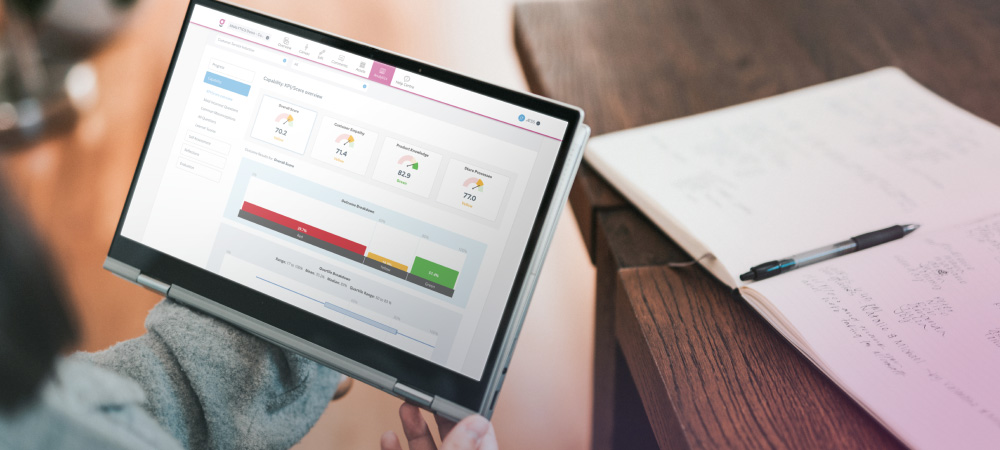As eLearning is gaining traction in the education industry, data is becoming increasingly important for companies to create more accessible learning experiences. In fact, many companies are beginning to pull data and learning analytics from their courses to optimise the accessible experience for their learners. By analysing underlying patterns, learning designers and their analysts can discover new insights into learning effectiveness and its effects on certain learners, especially those with disabilities or impairments. Four main data points can be used to optimise the accessibility of a course; in this blog, we'll explore what they are and the role data plays in learning design.

The Role of Data in the eLearning Industry
Course creation has made a drastic shift from presenting learners with large text blocks and expecting them to retain as much information as possible to a more interactive and effective approach that expects learners to understand and apply what is being learnt into their everyday lives. Data is at the heart of this. Learning designers can pull massive amounts of data from how learners interact with the content, including engagement levels, progress, and passing rates. This data provides valuable insights into how learners engage with content and can be used to optimise the experience. For instance, a designer may notice that their learners stop and spend significant time on a certain module. This may indicate that the information presented may not be clear and concise and that certain learners are struggling with accessing the content.
For learners with disabilities, a sudden drop in passing rates may indicate that these learners are unable to understand what is presented. Here, the designer may run over whether their content is responsive to certain devices or whether these learners can understand what is in front of them.
Data Analytics
Data analytics examines data sets to draw conclusions about the information they contain. In eLearning, this can help designers to identify trends and patterns that exist to make a more personalised learning experience. Designers may use these patterns and trends to provide a more personalised experience to learners that require it; let's say that a section of learners have hearing impairments, and data shows that these individuals are struggling on a video portion of the module. The designer may realise that they didn't incorporate captioning or external text-only documentation and, in an effort to create an equal learning experience, will add these into the module so these learners begin performing at a rate that meets all other learners.
Learning Analytics
Learning analytics falls under data analytics and focuses on measuring, collecting, analysing, and reporting data points about the learner. This data includes demographics, preferred learning styles, engagement levels, and performance rates. Learning analytics helps to identify patterns in behaviour and can be used to create more effective and personalised learning experiences. Accessibility optimisation from learning analytics can be drawn from preferred learning styles and learning satisfaction rates; by looking at which styles lead to the highest satisfaction, designers can create an experience that meets the needs of those with differing abilities.
Below are four important data points that companies and they're learning designers can look at to optimise learning experiences for learners of all types of abilities:
Learner Proficiency
Learning is not about passing rates; it's not about getting the highest score or finishing the fastest. Instead, effective learning will allow the learner to gain new skills and knowledge about a topic. Learner proficiency is the learner's ability to demonstrate competence in relation to the information they are learning. This is why creating courses with accessibility in mind is important so that learners with disabilities can display the same competence levels as other learners.
Learner Satisfaction
Learner satisfaction ratings will reveal what learners are enjoying and how effective these activities are. For learners with disabilities, understanding their satisfaction with the course will reveal whether or not the designer has met accessibility needs. Organisations can find this information by creating polls or surveys that learners complete throughout the learning process.
Learner Engagement
Not all learners who complete a course are fully engaged when doing so. Using an LMS system that flags low engagement rates will indicate how engaged learners are in the course. Including multimedia aspects that support all learners throughout the learning process, regardless of their ability, will encourage higher engagement rates.
Learner Progress
Learner progress is an excellent indication of your course's difficulty level. Some learners may be speeding through the course and require more complex course material to keep them engaged. While others may be falling behind and will require support and communication to drive progress. Regardless of ability, all learners will work at their own pace and knowing when to intervene is extremely important to learners' success.
Data analytics and learning analytics are pushing the learning design world forward as they reveal information that has not previously been so easily accessible. This data allows designers to gain valuable insights into their learner's behaviours, preferences, and needs. By leveraging this data, companies can offer a more personalised and effective learning experience for all learners and their abilities. And as we look forward, data will only play an increasingly more significant role in shaping the future of the eLearning Industry.


